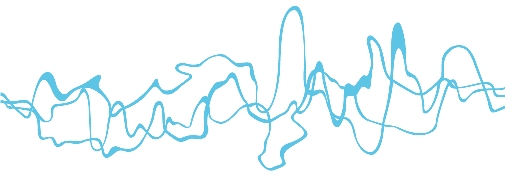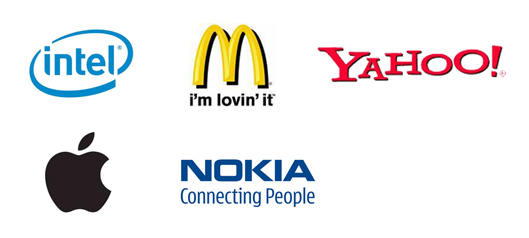 An effective brand identity is commonly perceived as a good brand name and logo, trendy package design – dimensions which mainly concern visual senses. However, this common perception of branding is incomplete.
An effective brand identity is commonly perceived as a good brand name and logo, trendy package design – dimensions which mainly concern visual senses. However, this common perception of branding is incomplete.
Human beings have five senses, so why would brand strategists leave four of them aside? Over the past few years, senses other than sight have been explored by brand experts and marketers. Although the senses of taste and touch are more difficult for brands to reach, some brands like Singapore Airlines and Rolls Royce have already used scent to build brand identity, also known as olfactive branding. A new area of focus is now sound branding, which will be explored in this article.
Sound can be seen as a vague notion, so let’s define it first. Daniel Jackson, the author of the book Sonic Branding, distinguishes three types of sounds: voice, ambiance, and music.Voice covers any sound produced by human-beings, from a baby crying to Pavarotti singing. Ambiance refers to every sound produced by our environment, from weather to machines. Finally, to define music, we will quote the New Oxford Dictionary of English: “The art or science of combining vocal or instrumental sounds (or both) to produce beauty of form, harmony, and expression of emotion.”
Hearing: A powerful human sense
First of all, while visual, taste or touch features of a product or brand requires people to directly interact with it in order for it to be perceived, a sound characteristic is a good way to reach consumers without them doing anything. We are all exposed to sounds whether we like it or not, and we do not have to do anything to hear them.
Moreover, as Michaël Boumendil, the founder and general manager of Sixième Son* (a leading agency worldwide for sound branding based in Paris) explains, each of us has begun our communication life by decoding sounds as early as when we are in our mother’s belly. At this formative stage of our life, we had already heard and memorized sounds, the most important being the mother’s heart beat. We were able to interpret that a beat of 60 pulsations per minute means a calm and comfortable state. Due to this early biological exposure, human-beings are naturally sensitive to sounds and their meanings.
In addition to influencing our mood by making us feel energized or sleepy, happy or sad, sound has an amazing ability to inspire us and remind us of the past. Psychological studies have shown that humans strongly associate sounds with a particular memory. Thus, sound has this unique power to recall certain experiences, which is a crucial advantage when it comes to building a strong brand in the minds of consumers.
Sound Branding Examples
Many companies are now starting to realize the effectiveness of sound branding, also known as sonic branding, audio branding or auditory branding. Here are some examples of famous and efficient sound trademarks: the Intel jingle, McDonald’s “I’m loving it”, the Yahoo yodel, Apple computer sounds, and Nokia’s ringtone. These major brands evoke a strong and unique identity on their own, but their foothold in customers’ minds is made even stronger when coupled with a distinguished and memorable sound. All of these leading brands have built their own unique sound personality as an integral part of their brand identity, and they are now recognized not only through a logo or a slogan, but also through a few musical notes. The McDonald’s Corporation itself has set out an aggressive sound branding campaign here in China, and even commissioned the famous Chinese pop singer Leehom Wang to sing “I’m loving it” in Chinese.
Example: Intel Inside Chimes
The man behind the ‘Intel Inside’ chimes: ”…Walter Werzowa had never heard of Intel when they asked him to compose a 3 second jingle for them. Last year alone, they spent $350m promoting the sound he created in his home studio by paying PC companies to use it in their ads. It’s played once every five minutes somewhere around the world.

Royal Air Maroc recently reviewed its entire brand identity and created a sound identity with the help of Sixieme Son. Wafaâ Ghiati, the marketing manager of the company, explains that the idea of a sound trademark came naturally with the whole brand revamp. Royal Air Maroc’s sound identity had to convey the five core values of the airlines, which are Moroccan, majestic, magical, maternal and modern, while respecting the oriental roots of the company and being strongly oriented to the future. The goal of this new identity was triple-fold: to better differentiate the airline, express its values, and reinforce the impact of its communication.
 Wafaâ Ghiati describes the new sound identity as music which is modern without being too “fashionable”, and which has personality without being aggressive. This sound trademark is used for TV and radio ads, on the company website, as a jingle at air terminals, on CDs for clients, ring tones, and more. Although the sound aspect of Royal Air Maroc’s brand identity is very recent, the success is already measurable: on the internal side, comments about the sound trademark have been very positive, and on the external side, the music of the TV ad has been well received and many people have asked for a way to obtain it.
Wafaâ Ghiati describes the new sound identity as music which is modern without being too “fashionable”, and which has personality without being aggressive. This sound trademark is used for TV and radio ads, on the company website, as a jingle at air terminals, on CDs for clients, ring tones, and more. Although the sound aspect of Royal Air Maroc’s brand identity is very recent, the success is already measurable: on the internal side, comments about the sound trademark have been very positive, and on the external side, the music of the TV ad has been well received and many people have asked for a way to obtain it.
Sound branding gives a brand a unique audio identity, which can over time become a valuable trademark. Branding in this sense not only helps trigger memory and associations, but it is also perceived as an indication of quality and trustworthiness.
How can a brand create an effective sound identity?
The five most important characteristics of a brand sound identity are:
- length and clarity
- distinctiveness
- relation to the product
- pleasantness
- familiarity and accessibility
The first four characteristics can be managed during the creation process, and the fifth one can be reached through an effective marketing strategy. However, a sound which is familiar to customers does not mean instant success for the brand. Marketers have to make sure that customers associate this familiar sound with the corresponding brand. An easy and efficient way to guarantee this correlation is to include the brand name within the sound itself.
Although sound branding may at first seem complex and abstract, when prepared and communicated effectively in accordance with brand strategy, it has the power to build your brand in an “unheard of” way.
Author: Vladimir Djurovic written in collaboration with Michaël Boumendil from Sixieme Son, a strategic partner of Labbrand.

Great article. You touched on some of the most recognizable brand sounds.
In addition to corporations, musicians are beginning to catch on to the perks of sound branding. What incentives make bands want to ally themselves with corporate brands, rather than the traditional route of a record label? Take Bacardi and its official musical group Groove Armada for example:
http://soundlounge.wordpress.com/2009/02/09/investing-in-the-sound-of-the-brand/
Great article!
More about Sonic-Branding (Audio Branding) you´ll hear at the ( ( ( Audio Branding Congress 2009 ) ) ). The Audio Branding Congess 2009 takes place in the famous old warehouse district (Speicherstadt) of Hamburg, Germany on the 14th November 2009.
At this atmospheric venue decision makers from the fields of brand management, marketing, advertising and design, as well as sound designers, people from the music business, researchers and scholars will meet, discuss latest trends and exchange information about this new emerging discipline of Audio Branding. Presentations about new insights, innovative approaches, proven methods and best practice cases will be held by internationally acclaimed experts from practice and science.
http://audio-branding-congress.com
Good intro to Sound Branding!
I would add a crucial task which should be mandatory for every Sound Branding element: brand fit – or I would even say: brand expression! Only when a Sound Branding element expresses the values and emotions of the brand it fulfills its task to build up brand equity. As Sound Branding has become more and more popular “low profile” Sound Elements are created (I would not even call them Branding Elements).
Another point not to miss is neuro marketing. In our blog (www.soundbrandingblog.wordpress.com) we discuss the issue of: Why do some Sound Branding elements work some don’t? Does neuroscience gives us the answer? Feel free to comment.
Karlheinz Illner